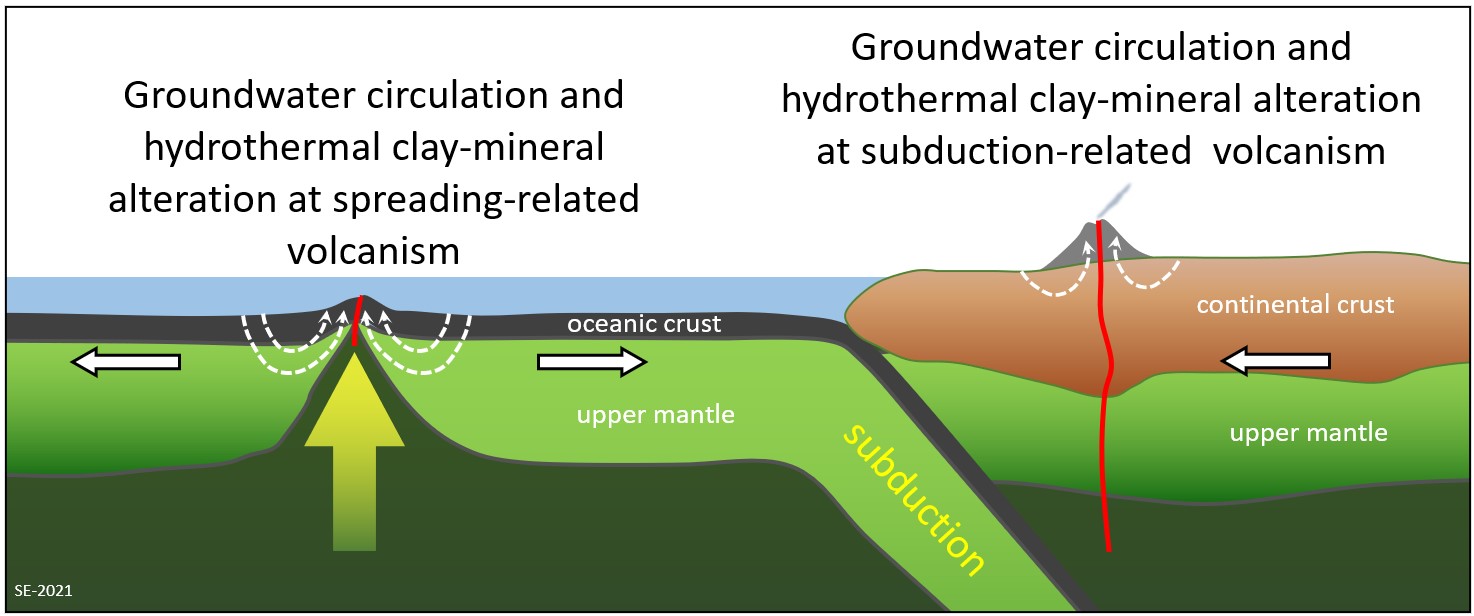2-2 Clay Minerals
Clay minerals are special because they are phyllosilicates that have relatively weak inter-layer bonding (Figure 10.5.2 in the textbook), making the rocks and sediments they are within quite weak. This is because they have negatively charged surfaces and so are attractive to cations, and also because they tend to exist as very small crystals so that a mass of clay grains has a very high surface area (Figure 10.5.4). There is a significant emphasis on clay minerals in this course because their existence has many implications for Environmental Geology and Earth Systems. Some of these implications are discussed below, but they are also covered in several other parts of this course.
Clay minerals are common products of chemical weathering of silicate minerals (by hydrolysis) and, as summarized on Table 10.5.1 in the textbook, the most common weathering products are kaolin and smectite. An example of that is the chalky look of the kaolin on the surface of feldspars in the weathered granite shown on Figure 10.2.1. Clay minerals also form at temperatures higher than those of weathering at surface, and this takes place at relatively shallow levels in volcanic regions and at greater depth elsewhere. Clay mineral formation is particularly common in situations where there is water flowing through the rock.
Two examples of that are illustrated on Figure 2-1 below. On the left, sea water is circulating through oceanic crustal rock. On the right, fresh water is circulating through older crustal rock and more recent volcanic rock. In both cases the convective systems have been created by the heat of the volcanism. The oceanic crustal rock is basalt and gabbro that are dominated by pyroxene, olivine and plagioclase feldspar. The likely alteration product in that situation is the clay mineral chlorite, although serpentine might also be formed from any ultramafic parts of the oceanic crust or upper mantle. The continental crustal rocks surrounding a subduction-related volcano can be highly variable in composition, so several different clay minerals could form.

Figure 10.5.5 in the textbook shows the types of clay mineral transformations that can take place within sedimentary rocks during burial. Smectite and kaolin form near to surface (as is the case in weathering environments), while chlorite, illite, and the non-clay mineral muscovite are more common at greater depths.
Exercise 2-2 Properties of Clay Minerals
Clay minerals are important to several Earth Systems processes, and some of the key roles are listed in the textbook. Make sure you understand why clays are important in those roles. Some of the important properties of clay minerals are listed in the table below. In the right-hand column provide an explanation for the property listed.
| Property | Explanation |
| Soft and weak | |
| Malleable | |
| Impermeable | |
| Attractive to cations | |
| Ability to swell |

